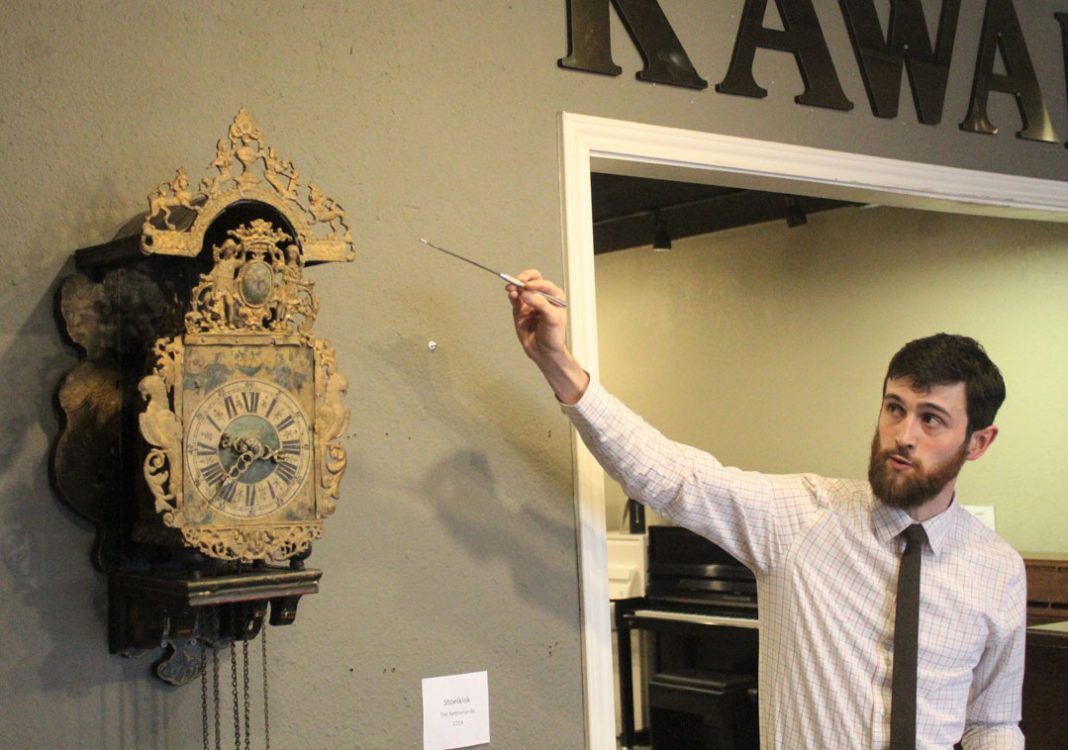In 1714, Benjamin Franklin was only 8 years-old, it was still 62 years before the colonies would declare independence from Great Britain and Johann Sebastian Bach would’ve been 30 years-old and still composing music in Germany.
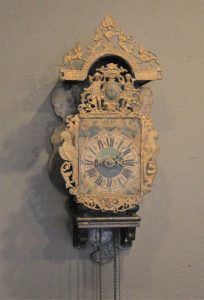
It was also the same year that a certain Dutch clock was manufactured for a wealthy German farm family and would eventually make its way to Midland, 308 years later.
That clock, which will soon be sent to the National Watch and Clock Museum in Columbia, Pa., was seen by the community for one last time Thursday during a reception at Piano Works Gallery and Clocks in Midland.
“It’s very exciting,” Piano Works Clockmaker Philip Soley said. “In my personal life, I collect clocks and watches so my job is my passion. To be able to be a part of this clock’s journey is really a fulfilling thing. I’m looking forward to sharing this with West Texans as much as possible.”
The timepiece was originally constructed in 1714 in the Netherlands and over the years made its way into the home of Midland resident Florence Larsh who passed away back in February of this year.
The estate of Larsh has donated the clock to the museum in Pennsylvania.
The clock is specifically a stoelklok (or “chair clock”, as it is translated from Dutch to English).
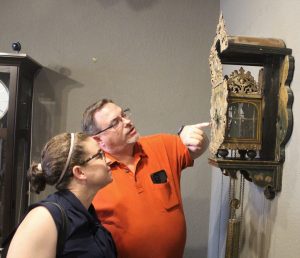
A stoelklok is a weight-driven wall clock with a short pendulum in which the clockwork with small feet is raised and free on a so-called chair and is usually made of wood.
This type of clock was very common in the Netherlands in the 17th and 18 centuries and was very labor-intensive.
“Back when this clock was made, it was all done by hand,” Soley said. “The clock case itself is hand-carved wood. It was very labor intensive for whoever made this. It’s very unique and really one of a kind.”
Soley says he knows the clock was made in 1714 because the year has been inscribed on the back by whoever made it, which was a common practice back then for clockmakers.
While the original maker of the clock remains a mystery, Soley talked about the clock’s journey from Europe to West Texas over the last 300 years.
The clock was first owned by the Grohs family, which Soley says would’ve been a farm family in western Germany, near the Dutch border.
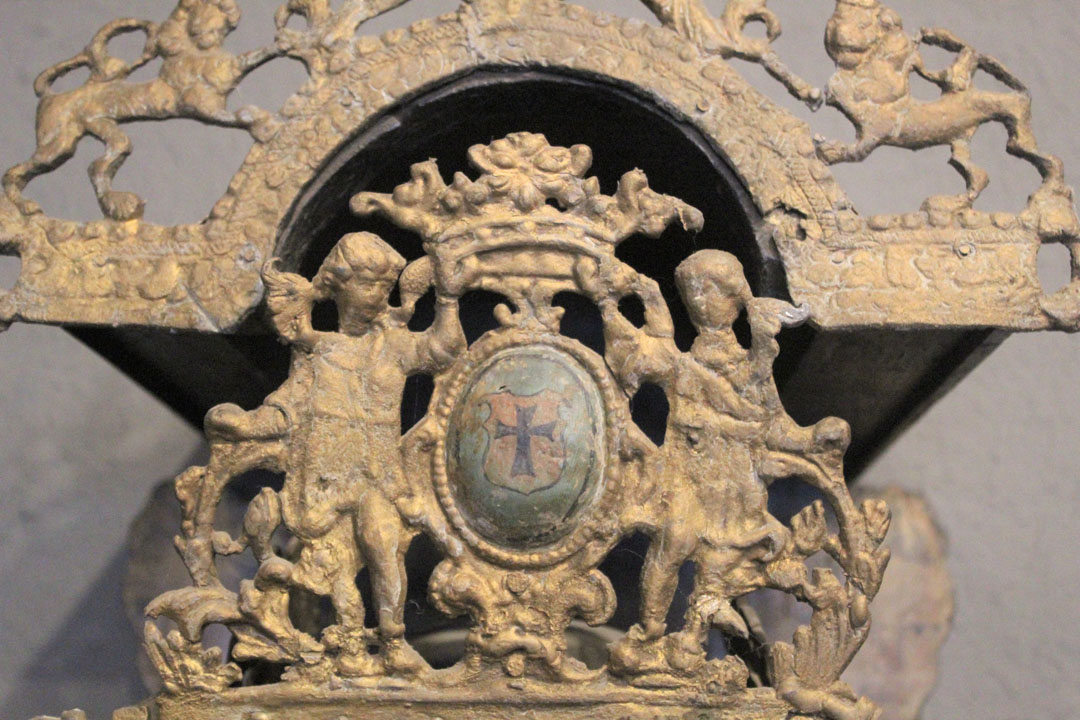
“This clock would’ve been important for the family for two reasons,” Soley said. “One, it would’ve been very expensive to get the clock made. It’s all hand done. It would not have been cheap. It was a status symbol. It’s also a one day clock so once per day, you raise the weights of the clock and they would use the clocks chimes to run the day-to-day operations of the farm.”
Over the years, the clock stayed in the family, likely being passed down from each generation before one day selling it.
The clock went through different owners in Germany.
It wouldn’t arrive in the United States until April 1932 when a guy named Hermann Jansenn Sr. sold it to his son Hermann Janssen Jr. who was living in Nebraska City, Neb., and owned a store.
Soley had a document on display at Thursday’s reception to show the clock’s shipment across the Atlantic Ocean.
The cost to ship the clock in 1932 was $8 (or roughly $162 today).
It wasn’t long before the clock finally arrived in West Texas.
The clock was eventually sold to Florence Larsh’s father who was named Napoleon Bonaparte Larsh (no relation to the French military leader) who brought it down to Texas.
By that point, Florence had already been born and her family moved to Midland in 1934.
The timepiece would remain in the family until Larsh’s death.
“Florence went to Midland High,” Soley said. “She was very involved in the community. She did not have any kin and so when she passed away, all her belongings will be going to charity in a very generous last act.”
It was earlier this year when Brenda Morris and her husband Jim, who is the executor of Larsh’s estate, noticed the clock on the wall at Larsh’s house.
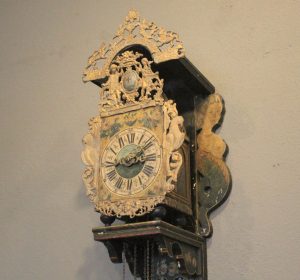
“We went to visit Florence,” Brenda said. “She was bed-ridden at that time. I said something about looking at the rest of the house and I went into the living room and saw that clock and I was just taken with it. It’s funny now but I said ‘that clock has to be at least 150 years old.’ What fascinated me is all the metal work around it and the wood. I had never seen any clock like it. That was just it.”
It wasn’t long before Morris got in touch with the National Watch and Clock Museum and eventually Soley.
“I said the clock can’t go to the estate sell,” Morris said. “I found the museum and they got an appraisal and that’s how I met Philip. I heard about this place and came in one day and asked for an appraiser and I met him. He was really excited about it.”
While the clock is about to be in a new location, Soley is excited that the general public will get to see it.
“I’m happy that it’s going to the Watch and Clock museum because that means more of the public will be able to see it,” Soley said. “This museum is a destination for people worldwide. When the clock was residing in the private residence, only the owner got to see the clock and now it’ll be in a museum and more people will be able to see it.”

